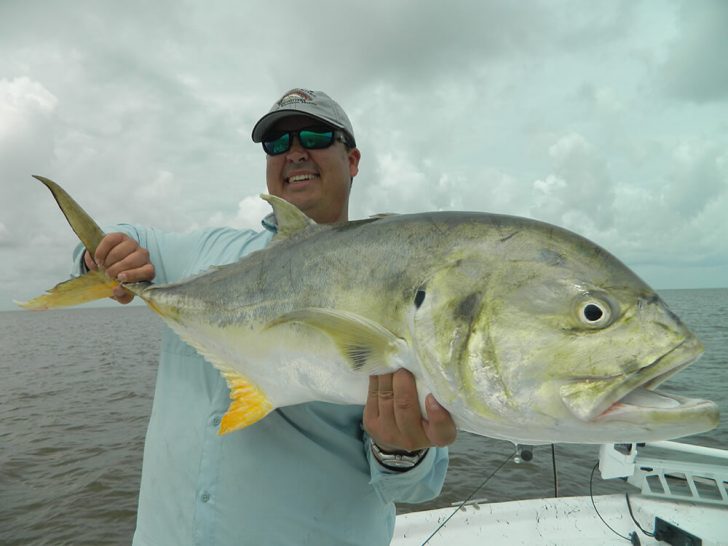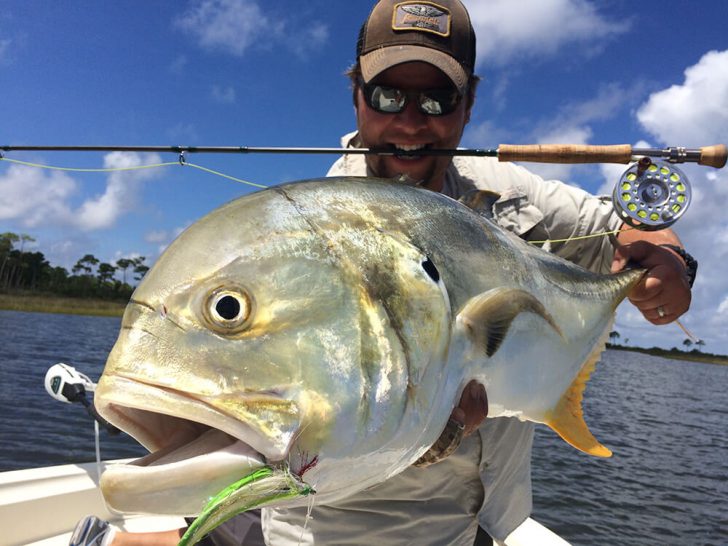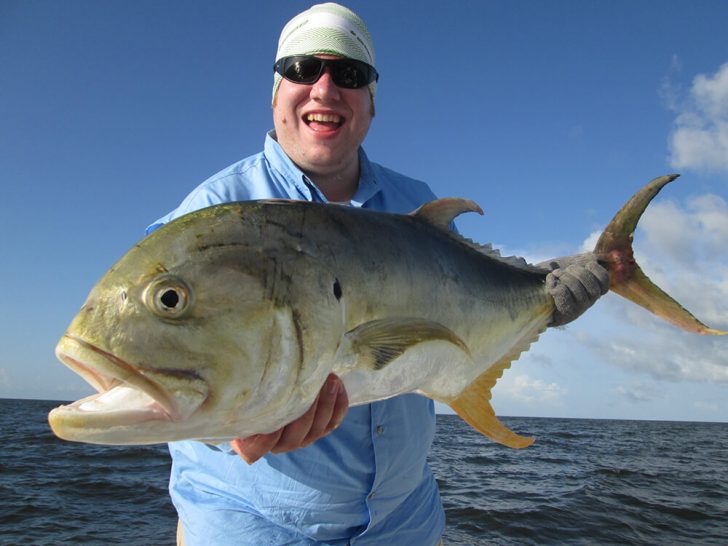I pulled the throttle back on the engine and let the boat drift down with the wind. We were on the south side of Cat Island just off the coast of Pass Christian, Mississippi. In the direct path of the boat were explosions resembling cannonballs launched from fighting pirate ships. No, we were not caught in a pirate battle, we had stumbled upon a solid acre of feeding jack crevalle.
Mullet were launching themselves in every direction, fleeing for their lives. We spent the better of the morning launching every bait we had into the melee and doing battle with some of the strongest fish that swim. Almost every day from May to November along the Mississippi Gulf Coast big Jacks can be found in huge schools feeding. With reported cases of ciguatera poisoning, the crevalle is not considered much for table fare. However, the jack crevalle can and will test both tackle and angler to their limit. The greatest part of fishing for Jacks, it can be done all across the Mississippi Gulf Coast.

Most anglers associate big fish (25 plus pounds) with far runs to deep water. Long runs and hefty fuel bills do not go hand and hand with jacks. The first jack crevalle I ever encountered was back in the early 1980’s off Garfield Ladner Pier, in Waveland MS. Ever since that day, the idea of catching “big fish,” a couple of hundred yards off the beach has been a real treat.
I have said it before, and I will say it again: I LOVE TO FISH! Sure I love eating fish, but nothing beats the stalk and fight of a big fish. Jack crevalle seem to be a perfect fish for someone, “looking to pick a fight.” They are around almost all year, they eat almost any bait presented to them, and they fight with endless energy. Add all of the above to the close proximity of these giants and you have one heck of a game fish.
Finding big jack crevalle is very very easy. If you have a boat, head to the barrier islands (Cat Island, Ship Island, or Horn Island) and scan the horizon. Big jacks make themselves known, huge white explosions and jumping bait fish are a dead give away. If you are lucky enough to stumble upon a shrimp boat in the Mississippi Sound, throw out a hand full of chum and enjoy the show. For those without a boat, load up the truck and head to the beach.
When we were younger we would wade the beaches for speckled trout in the mornings and then go hunt jacks. On a calm clear day, you can see them off the shores crushing schools of mullet, rain minnows, and pogie. Simply “cruise the coast,” anywhere from Ocean Springs to Waveland. Now that several new reefs are being constructed along the coast, the jacks should have miles of real estate to forage. If you do see a school of jacks, stop your vehicle and figure out which way they are moving. Move your vehicle at least half a mile down from the fish and wade out to meet them. When you hook up, try to make your way to the beach for an easier release of the fish.

For a real challenge, try tangling with these beasts using only a fly rod. A good 9 or 10 weight fly rod is a must. Start with a 25lb fluorocarbon leader and throw closer minnows or popping flies into boiling schools of jacks. Just be sure to bring plenty of food of water, you might be there a while.
People travel all over the globe to catch fish they don’t eat. Billfish, tarpon, bonefish are hard fighting fish that people pay thousands of dollars to catch. Why not save a few bucks, throw the kids in the boat and go make some lasting memories with one of the hardest fish that swim. As always, have fun and be safe.
Captain Sonny Schindler
Shore Thing Fishing Charters
Bay St Louis, MS
228-342-2295
www.shorethingcharters.com



